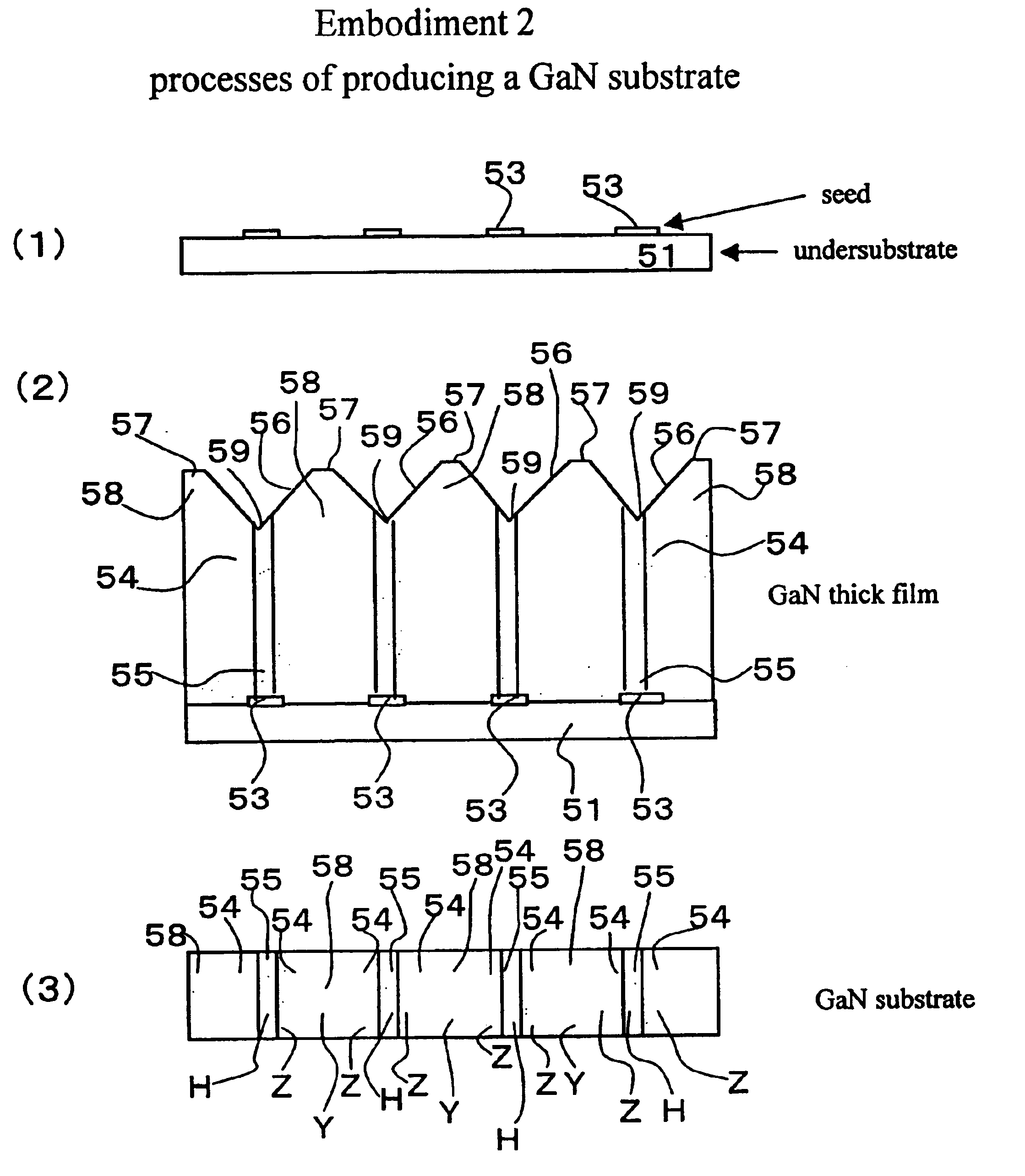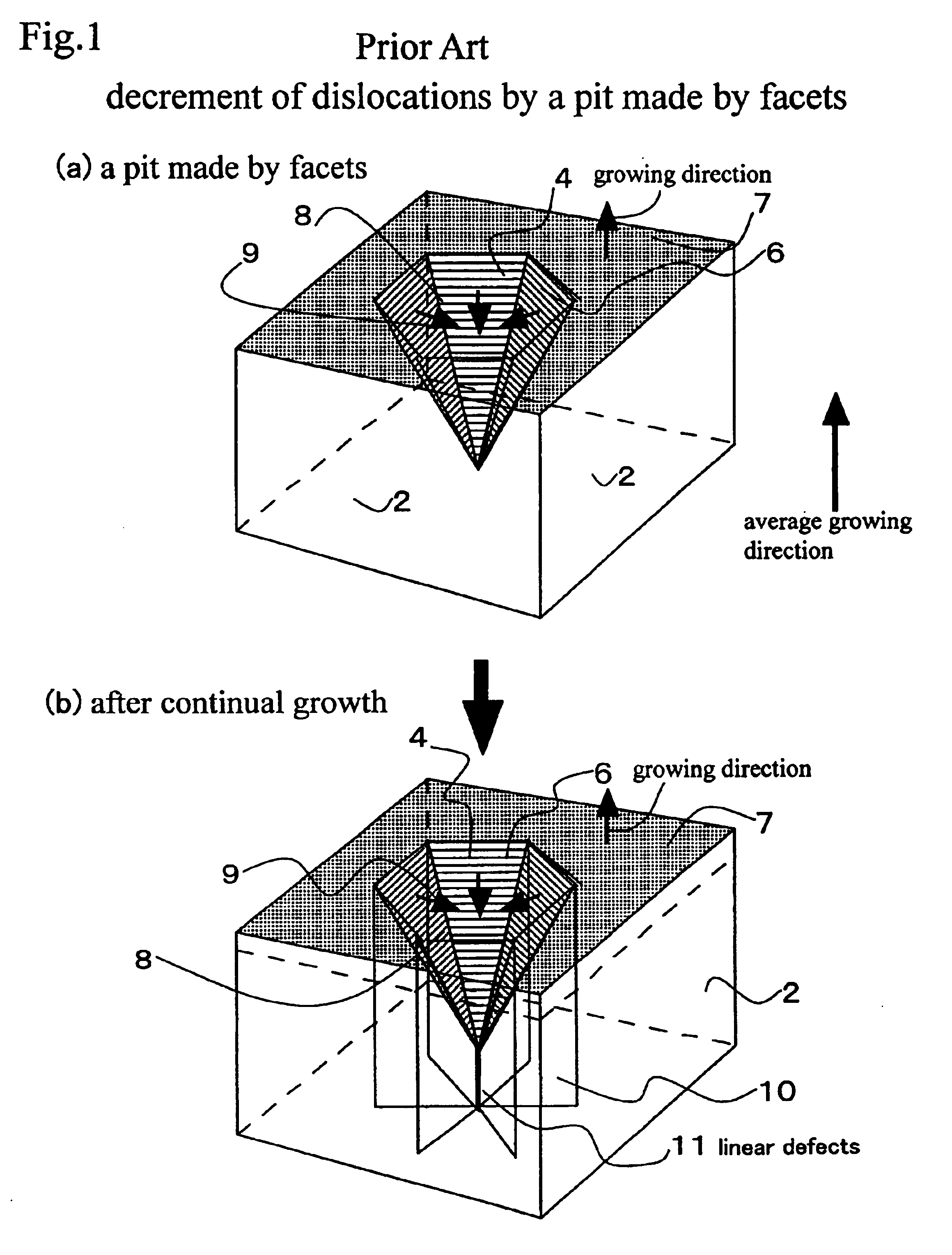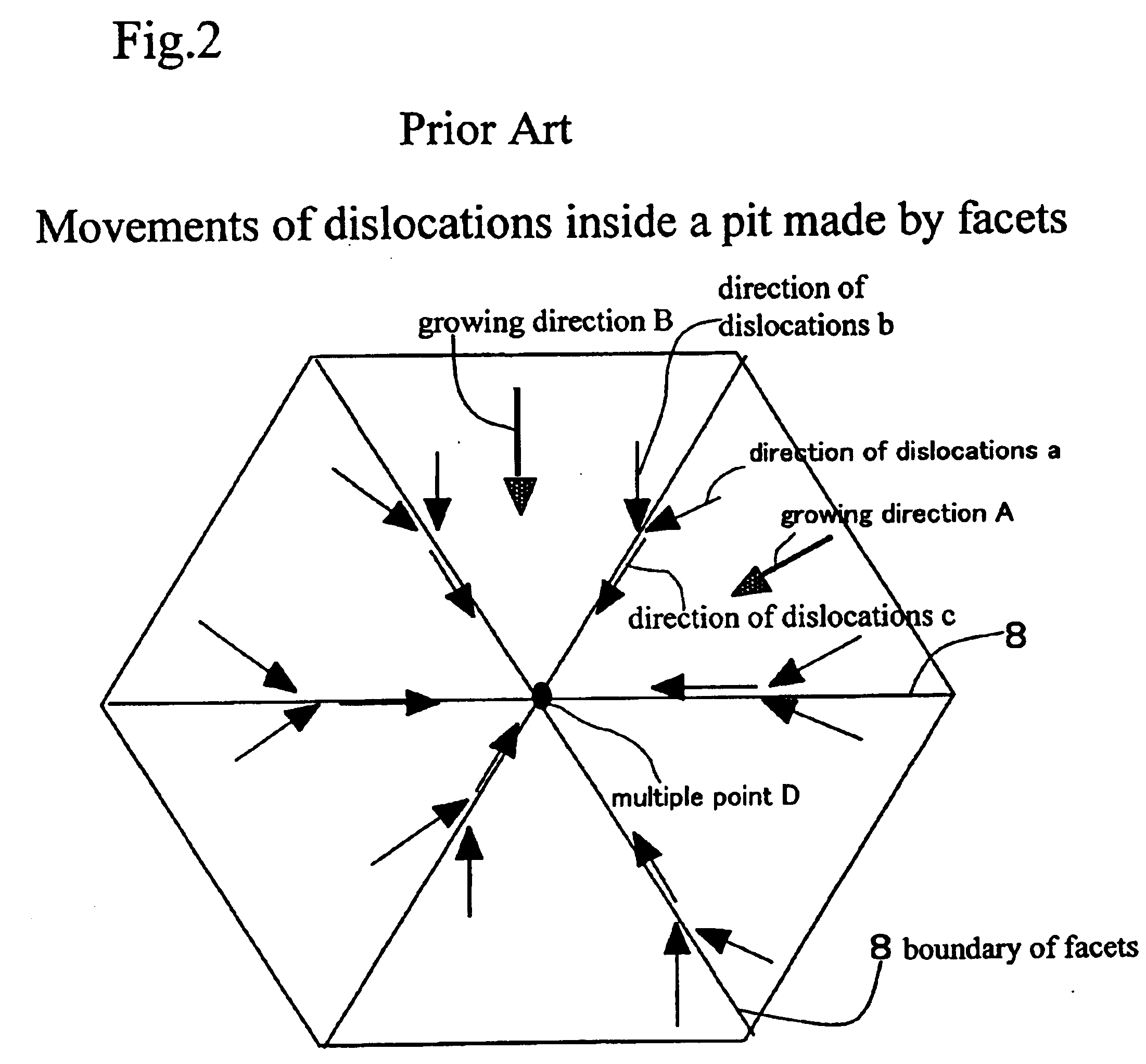Single crystal GaN substrate semiconductor device
a gallium nitride and single crystal technology, applied in the direction of semiconductor lasers, crystal growth process, polycrystalline material growth, etc., can solve the problems of inability to make a gallium nitride melt, inability to obtain wide, high-quality gan single crystal wafers, and inability to make a gan single crystal melt, etc., to reduce the density of regions and reduce the effect of foggy dislocations
- Summary
- Abstract
- Description
- Claims
- Application Information
AI Technical Summary
Benefits of technology
Problems solved by technology
Method used
Image
Examples
embodiment 3 (
Kinds of Masks)
[0456]A plurality of GaAs wafers having a (111) As surface are prepared as undersubstrates for examining the dislocation dependence upon materials of the mask. Different masks are made by coating the (111) As GaAs wafers with different materials.
[0457](I) A 0.15 mu.m thick Si.sub.3N.sub.4 (silicon nitride) film is directly formed on the (111) GaAs wafer.
[0458](J) A 0.2 .mu.m thick Pt (platinum) film is directly formed on the (111) GaAs wafer.
[0459](K) A 0.2 .mu.m thick W (tungsten) film is directly formed on the (111) GaAs wafer.
[0460](L) A 0.1 .mu.m thick SiO.sub.2 (silicon dioxide) film is directly formed on the (111) GaAs wafer.
[0461](M) A 0.1 .mu.m thick SiO.sub.2 (silicon dioxide) film is directly formed on the (111) GaAs wafer.
[0462]Seed patterns are tailored by painting a resist on the film-coated GaAs wafers I.about.M and etching parts of the films from the film / GaAs selectively by photolithography. The SiN film (I), the Pt film (J) and the W film (K) are allo...
PUM
| Property | Measurement | Unit |
|---|---|---|
| diameter | aaaaa | aaaaa |
| thickness | aaaaa | aaaaa |
| thick | aaaaa | aaaaa |
Abstract
Description
Claims
Application Information
 Login to View More
Login to View More - R&D
- Intellectual Property
- Life Sciences
- Materials
- Tech Scout
- Unparalleled Data Quality
- Higher Quality Content
- 60% Fewer Hallucinations
Browse by: Latest US Patents, China's latest patents, Technical Efficacy Thesaurus, Application Domain, Technology Topic, Popular Technical Reports.
© 2025 PatSnap. All rights reserved.Legal|Privacy policy|Modern Slavery Act Transparency Statement|Sitemap|About US| Contact US: help@patsnap.com



